Abstract
Purpose
To evaluate the relationship between intraocular pressure (IOP) and age, blood pressure and obesity index inocular hypertensive patients.
Methods
A total of 2684 ocular hypertensive patients underwent automated multi-phasic testing, including fundus photography, blood pressure and assessment of obesity. The subjects were divided into six age groups by decades ranging from 20∼29 years to over 70 years of age. The relationships between factors were examined using multiple regression analysis.
Results
The mean participant age was 48.0±11.0 years, and 1,777 (66.3%) participants were male and 907 (33.7%) were female. The mean intraocular pressure (IOP) was 22.04±2.2 mmHg and was significantly higher in males than in females (p=0.023). The IOP was associated with mean blood pressure, gender and obesity index. After adjustment for mean blood pressure and obesity index, the relationship between IOP and age showed a significantly negative tendency (p<0.001). The relationship between IOP and obesity index adjusted for age and mean blood pressure had a significantly positive tendency (p<0.001), regardless of gender. The relationship between IOP and mean blood pressure adjusted for age and obesity index showed a significantly positive tendency (p=0.00014).
Go to : 
References
1. Meckenzie W. Practical treatise on the disease of the eye. 2nd ed.London: Longman;1835. p. 822.
2. Jung SK, Lee SK, Kim JH. Intraocular pressure change by the hemodialysis. J Korean Ophthalmol Soc. 1995; 36:2195–201.
3. Drance SM, Sweeney VP, Morgan RW, Feldman F. Studies offactors involved in the production of low-tension glaucoma. Arch Ophthalmol. 1973; 89:457–65.
4. Gasser P. Ocular vasospasm: A risk factor in the pathogenesis of low tension glaucoma. Int Ophthalmol. 1989; 13:281–90.
5. Rojanapongpun P, Drance SM. The response of blood flow velocity in the ophthalmic artery and cold stimuli in glaucomatous patients. Graefes Arch Clin Ophthalmol. 1993; 231:375–7.
6. Demailly P, Cambien F, Plouin PF. Do patient with low tension glaucoma have particular cardiovascular characteristics? Ophthalmologica. 1984; 188:65–75.
7. Kaiser HJ, Flammer J. Systemic hypotension: a risk factor for glaucomatous damage? Ophthalmologica. 1991; 203:105–8.

8. Hollows FC, Graham PA. Intraocular pressure, glaucoma and glaucoma suspects in a defined population. Br J Ophthalmol. 1966; 50:570–86.

9. Carel RS, Korczyn AD, Rock M, Goya I. Association between ocular pressure and certain health parameters. Ophthalmology. 1984; 91:311–4.

10. Schulzer M, Drance SM. Intraocular pressure, systemic blood pressure, and age: a correlation study. Br J Ophthalmol. 1987; 71:245–9.
11. Kahn HA, Leibowwitz HM, Ganly JP, et al. The Framlingham Eye Study: 2. Association of ophthalmic pathology with single variables previously measured in Framlingham Heart Study. Am J Epidemiol. 1977; 106:33–41.
12. Shiose Y, Kawase Y. A new approach to stratified normal intraocular pressure in a general population. Am J Ophthalmol. 1986; 101:714–21.

13. Shiose Y. The aging effect on intraocular pressure in an apparently normal population. Arch Ophthalmol. 1984; 102:883–7.

14. Qureshi IA. Intraocular pressure: a comparative analysis in two sexes. Clin Physiol. 1997; 17:247–55.

15. Nomura H, Shimokata H, Ando F, et al. Age-related changes in intraocular pressure in a large Japanese population. Ophthalmology. 1999; 106:2016–22.

16. Leske MC, Connell AM, Wu SY, et al. Distribution of intraocular pressure: the Barbados Eye Study. Arch Ophthalmol. 1997; 115:1051–7.
17. Mori K, Ando F, Nomura H, et al. Relationship between intraocular pressure and obesity in Japan. Int J Epidimiol. 2000; 29:661–6.

18. Lee JS, Kim CM, Choi HY, Oum BS. A relationship between intraocular pressure and age and body mass index in a korean population. J Korean Ophthalmol Soc. 2003; 44:1559–66.
19. Kwon GR, Kang SW, Kee C. The influence of central corneal thickness on intraocular pressures measured with goldmann applanation tonometer and non-contact tonometer. J Korean Ophthalmol Soc. 1998; 39:1494–8.
20. Bae GJ, Han TW, Ahn MD, Kim JH. Comparison of the non-contact tonometer with goldmann Tonometer. J Korean Ophthalmol Soc. 1992; 33:642–8.
21. Kass MA, Zimmerman TJ, Alton E, et al. Intraocular pressure and glaucoma in the Zuni indians. Arch Ophthalmol. 1978; 96:2212–3.

22. Klein BE, Klein R, Linton KL. Intraocular pressure in an american community. The Beave Dam Eye study. Invest Ophthalmol Vis Sci. 1992; 33:2224–8.
23. Stoupel E, Goldenfeld M, Shimshoni M, Siegel R. Intraocular pressure in relation to four levels of daily geomagnetic and extreme yearly solar activity. Int J Biometeorol. 1993; 37:42–5.
24. Bulpitt CJ, Hodes C, Everott MG. Intraocular pressure and systemic blood pressure in the elderly. Br J Ophthalmol. 1975; 59:717–20.

25. Kass MA, Sears ML. Hormonal regulation of intraocular pressure. Surv Ophthalmol. 1977; 22:153–76.

26. Matsuki S, Suzuki A. Definition, judgement and epidemiology of obesity. Clin Adult Dis. 1979; 9:919–23.
27. Jung SC, Choi YR, Lee JS. The relationship between intraocular pressure and cardiovascular risk factors. J Korean Ophthalmol Soc. 2005; 46:1518–25.
28. Katavisto M, Sammalkivi J. Tonometry among persons over 40 years of age. Acta Ophthalmol Scand. 1964; 42:370–7.
Go to : 
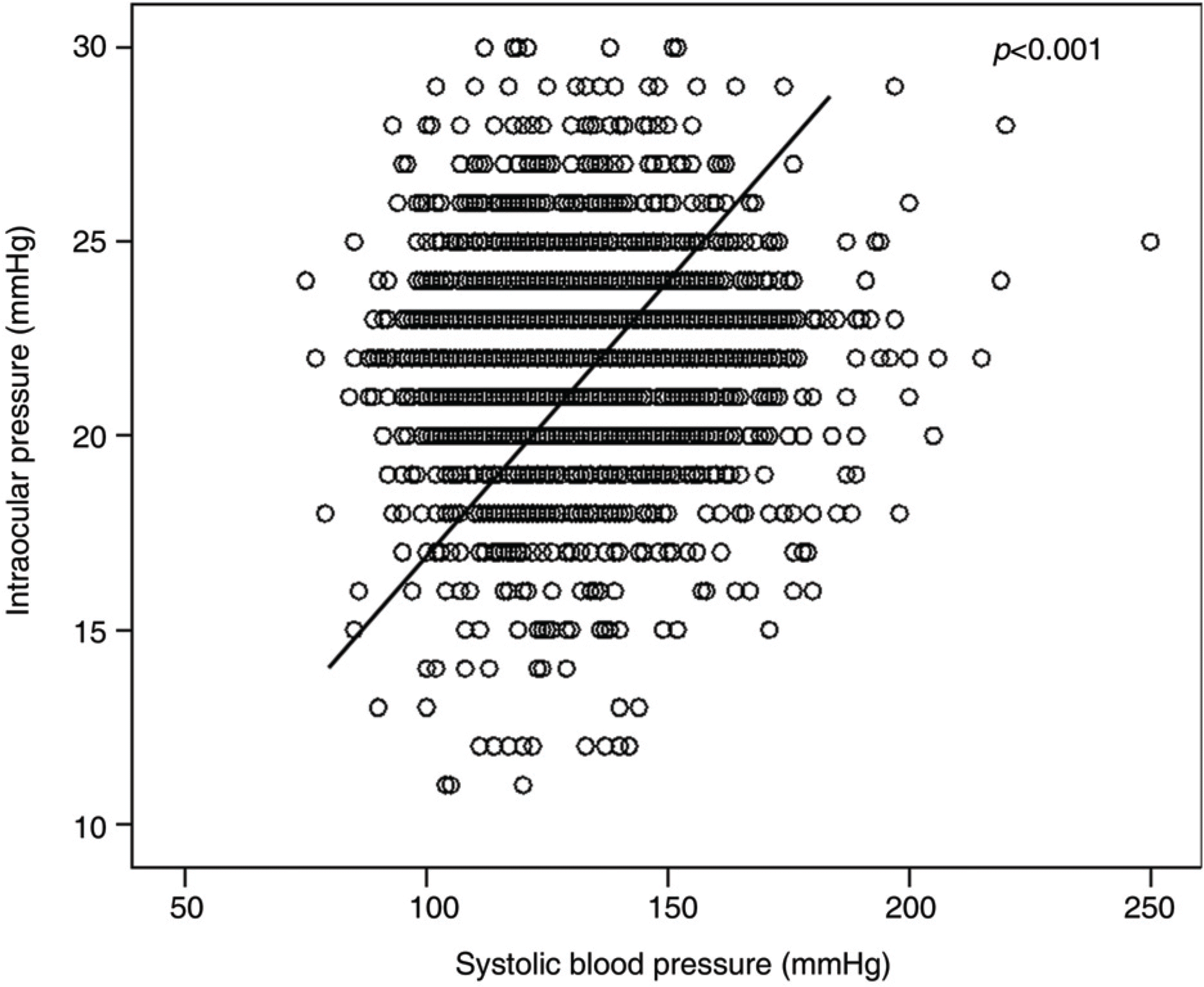 | Figure 1.Scattergram of relationship between intraocular pressure and systolic blood pressure. |
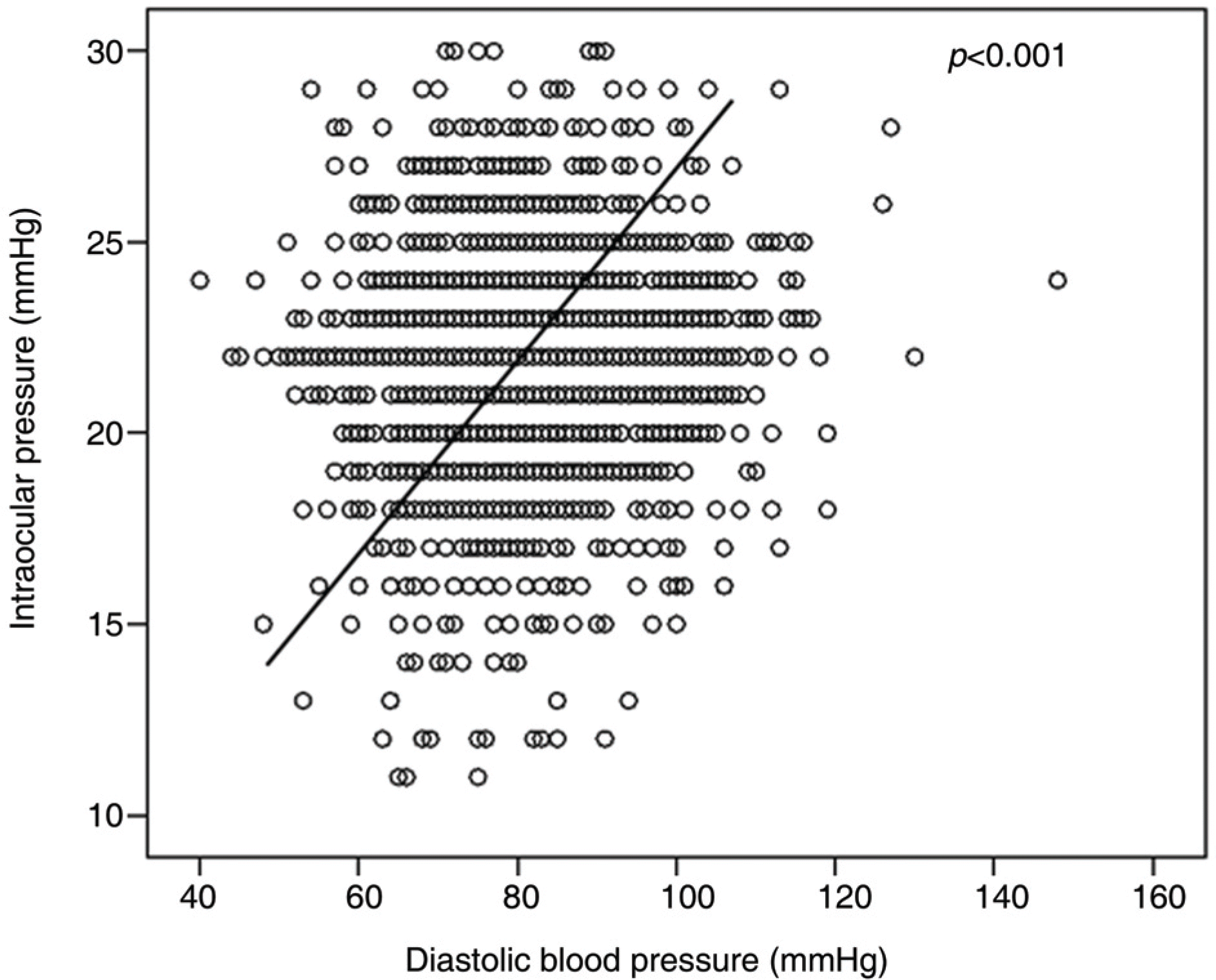 | Figure 2.Scattergram of relationship between intraocular pressure and diastolic blood pressure. |
Table 1.
Percent distribution of ocular hypertensive patients by age and gender
Table 2.
Mean values of age, intraocular pressure and cardiovascular risk variables by gender
| Variables | Female | Male | Total |
|---|---|---|---|
| Mean age (years) | 47.6±10.9 | 48.2±11.2 | 48.0±11.1 |
| Mean IOP† (mm Hg) | 21.83±2.4 | 22.12±2.5* | 22.04±2.2 |
| Degree of obesity‡ (%) | 119.52±40.3* | 115.14±13.2 | 116.59±32.4 |
| Mean BP§ (mm Hg) | 105.17±16.4 | 106.34±15.2* | 106.10±13.7 |
Table 3.
The relationship between IOP and mean blood pressure, age, and obesity index
| | | MBP† | Age | Obesity index‡ |
|---|---|---|---|---|
| | Pearson's | 0.073 | −0.093 | 0.057 |
| | coefficient of | | | |
| IOP* | correlation | | | |
| | p value | 0.00014 | 0.000001 | 0.0008 |
| | N | 2,684 | 2,684 | 2,684 |
Table 4.
The relationship between IOP and blood pressure, age, and obesity index of male and female
| |
Male |
||||||
|---|---|---|---|---|---|---|---|
| | IOP | Age | SBP | DBP | MBP | Obesity index | |
| Female | IOP* | 1 | −0.094# | 0.070# | 0.054# | 0.062# | 0.042# |
| | Age | −0.078# | 1 | 0.206# | 0.183# | 0.198# | 0.003 |
| | SBP† | 0.079# | 0.400# | 1 | 0.906# | 0.971# | 0.269# |
| | DBP‡ | 0.088# | 0.353# | 0.907# | 1 | 0.981# | 0.265# |
| | MBP§ | 0.086# | 0.384# | 0.973# | 0.980# | 1 | 0.273# |
| | Obesity index∏ | 0.036# | 0.116# | 0.124# | 0.144# | 0.138# | 1 |
Table 5.
Effects of gender, age, systolic blood pressure, diastolic blood pressure and obesity index on intraocular pressure
| Dependent variable | R2 | F | Independent variable | β-coefficient | Standardization | T |
|---|---|---|---|---|---|---|
| | | | K | 21.487 | | 53.954# |
| | | | Gender | .244 | .046 | 2.371# |
| IOP* | .021 | 11.598# | Age | −.028 | −.118 | −5.930# |
| | | | SBP† | .014 | .115 | 2.522# |
| | | | DBP‡ | .002 | .011 | .248# |
| | | | Obesity index§ | .000 | .003 | .138# |




 PDF
PDF ePub
ePub Citation
Citation Print
Print


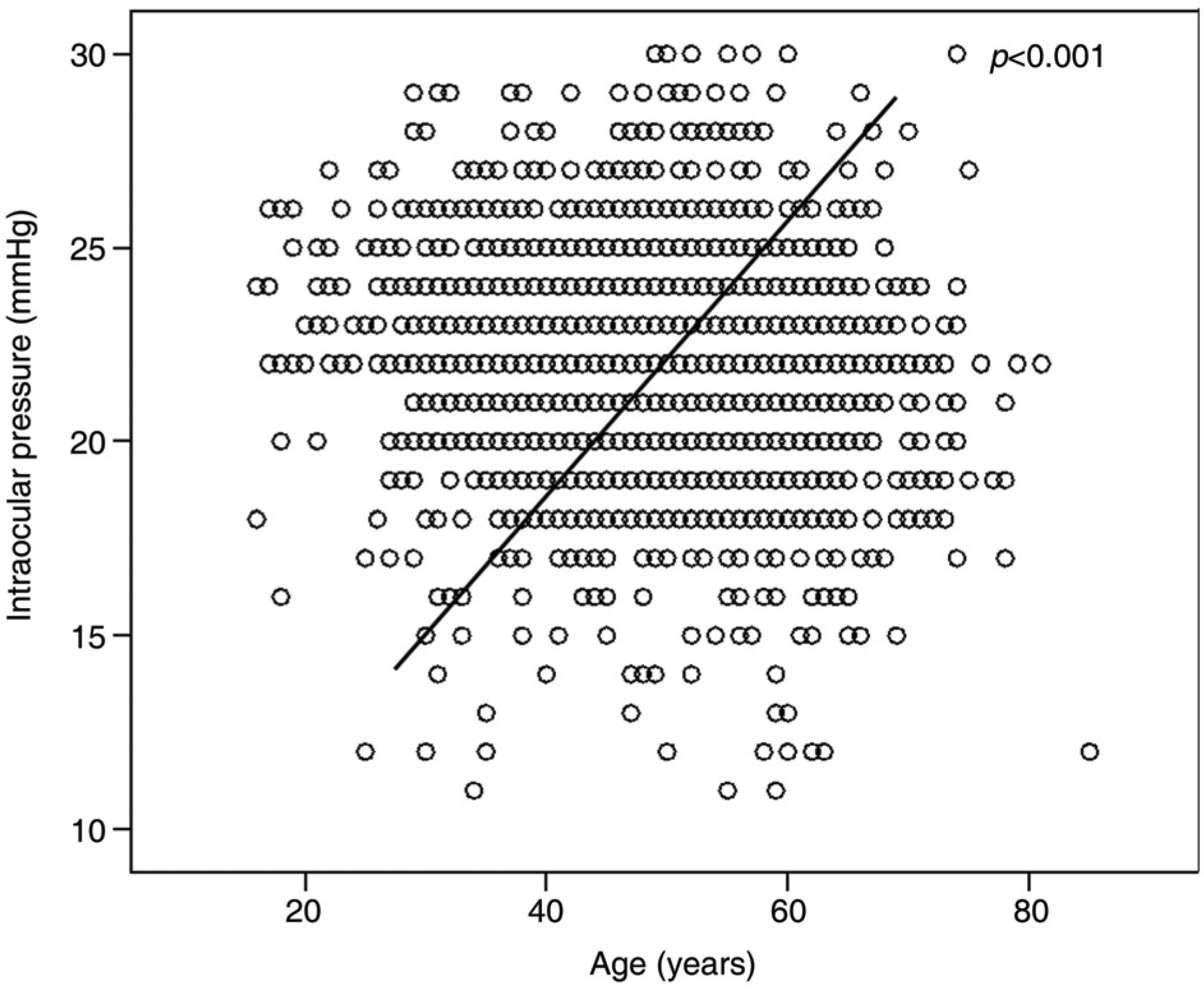
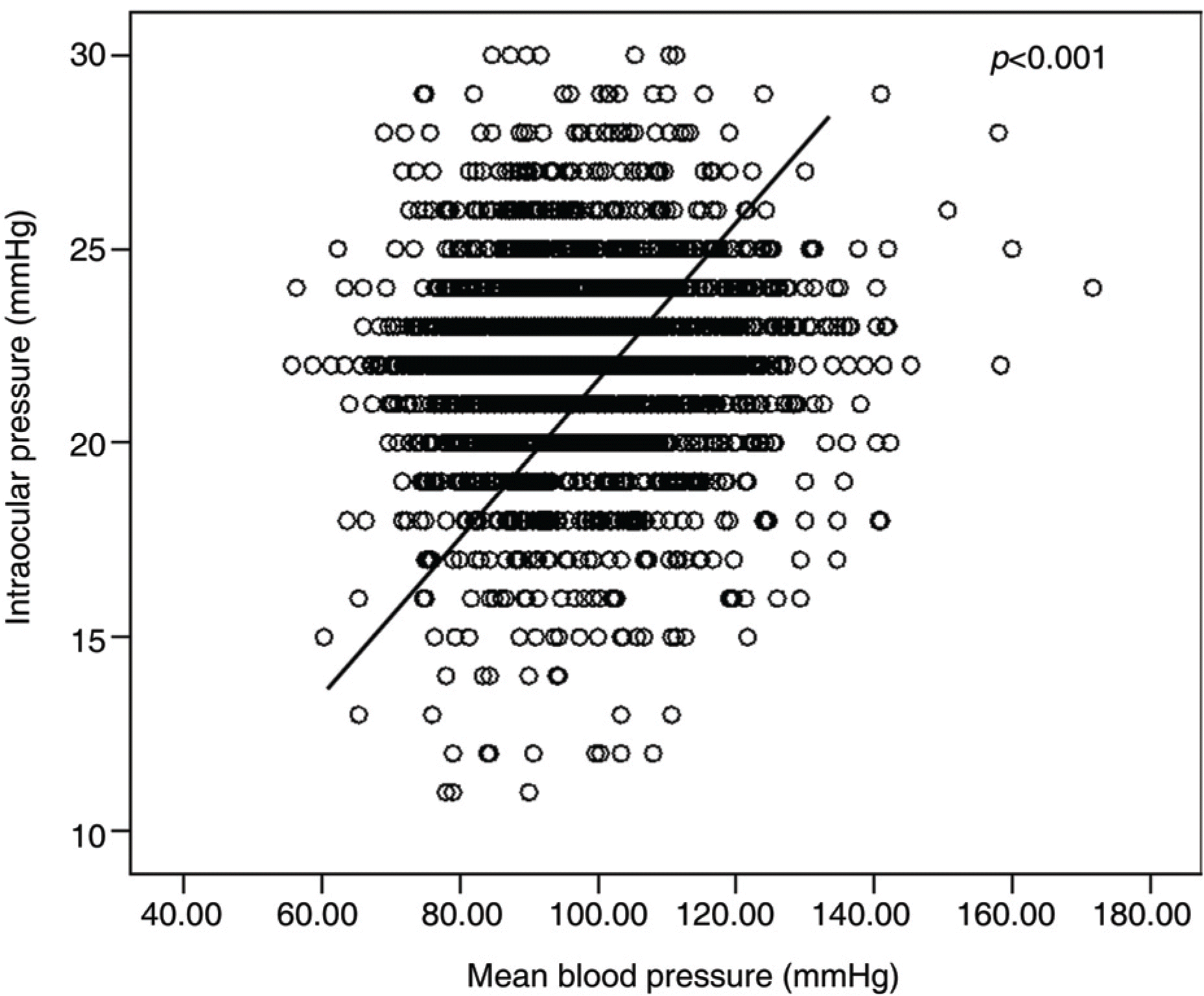
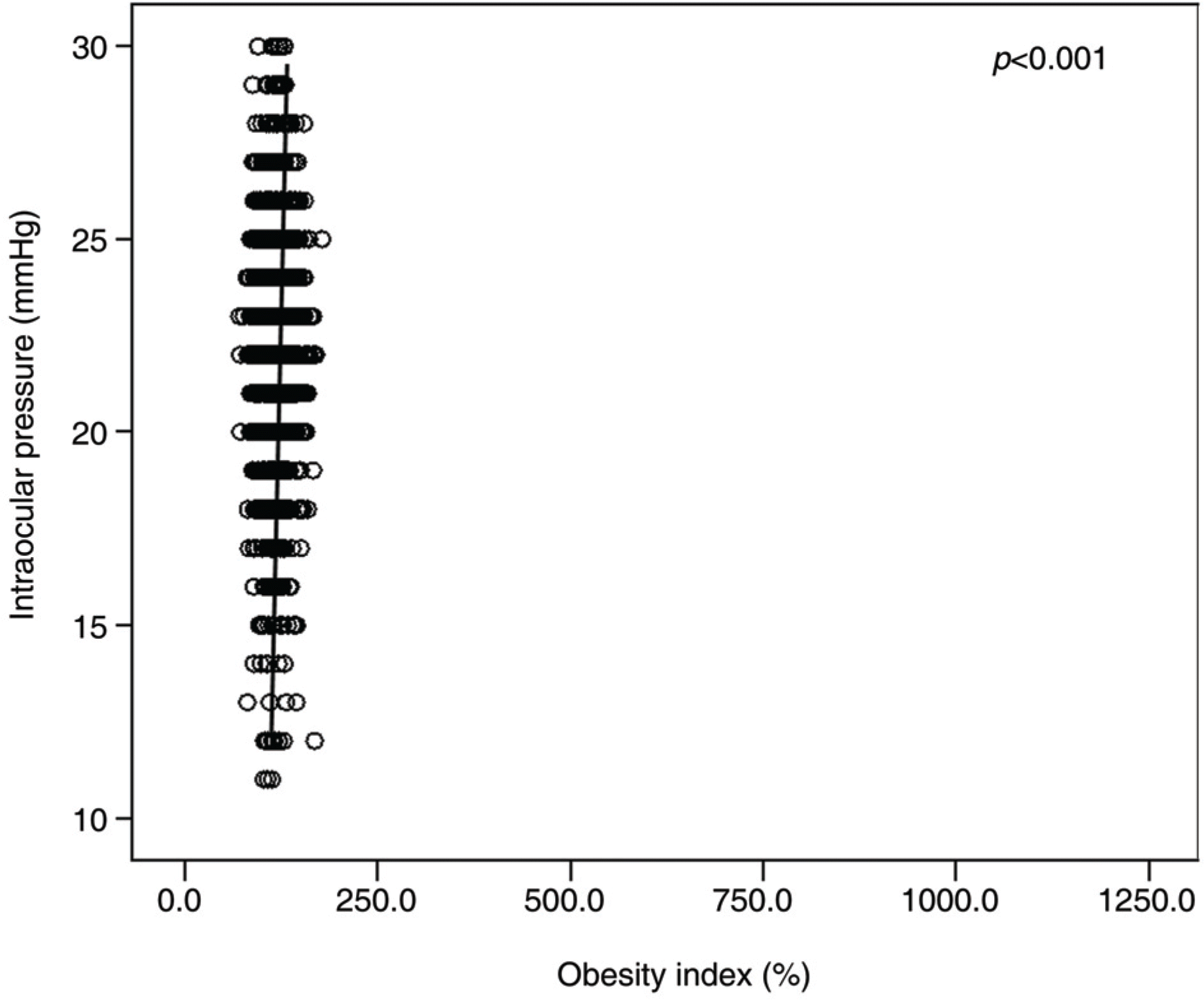
 XML Download
XML Download